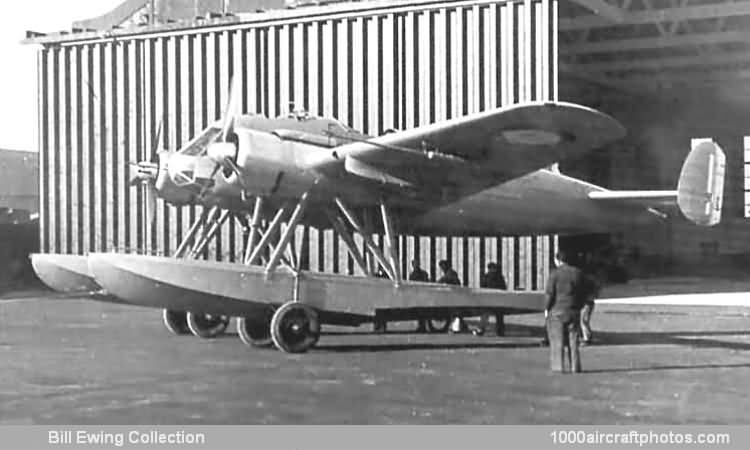The S.E.400-01 was completed at Argenteuil and transported by rail to Marignane where it made its first flight on December 31, 1939. The prototype was of mixed construction, the wing being of wood and the fuselage being a welded steel-tube structure with light alloy panels forward and fabric covering aft. The single-step light-alloy floats were each braced to the engine nacelles by pairs of N-struts and to the fuselage by sloping parallel struts. Armament consisted of one 0.295 in (7.5 mm) Darne machine gun on Blanchet-Pilain-30 dorsal mount with 600 rounds, plus two Michelin flares and two 165 lb (75 kg) bombs.
The initial flight, which lasted thirty minutes, revealed a number of shortcomings. Between December 31, 1939, and January 10, 1940, a ventral fin was added beneath the rear fuselage, water rudders were added to the floats and the exhaust pipes over the upper wing surfaces were replaced by "fish-tails". From January 11 to February 8 wing root fairings were added and a new, enlarged tail assembly was fitted, this being mounted 13.3 in (0.34 m) higher than the original assembly, but the characteristics of the floatplane were still unsatisfactory.
Hence, from February 10 until March 14 the S.E.400-01 was undergoing further modifications, the fuselage nose section being lengthened by 29.5 in (0.75 m), the ventral fin was further enlarged, new elevators were fitted and the carburetor air intakes were moved forward to the lips of the engine cowlings.
These changes were followed by the introduction of new floats 15.7 in (0.44 m) longer than their predecessors, the original tail plane was re-installed and increased in area by 4.3 sq.ft (0.40 sq.m) by means of tip extensions, and the fins and rudders were lowered. Continued instability necessitated the reintroduction of the second tail plane accompanied by appreciably larger mid-mounted endplate fins and rudders, the removal of the ventral fin and water rudders and the forward movement of the center of gravity.
Further trials conducted on May 12, 1940, by which time the S.E.400-01 had logged 12 hr 5 min in the air, revealed that most stability problems had been overcome, but by this time the German offensive had started, and on May 24 the SNCASE was ordered to abandon further work on the S.E.400 owing to the delays that had occurred in developing the floatplane to production status. Work on the S.E.400-02 had already been shelved when 50% complete pending the results of further trials with the first prototype, and at one period a version of the basic design was proposed with Pratt and Whitney S3HI-G Wasp engines.
The photo and the upper side-view in the 3-view show the S.E.400-01 before modifications."
